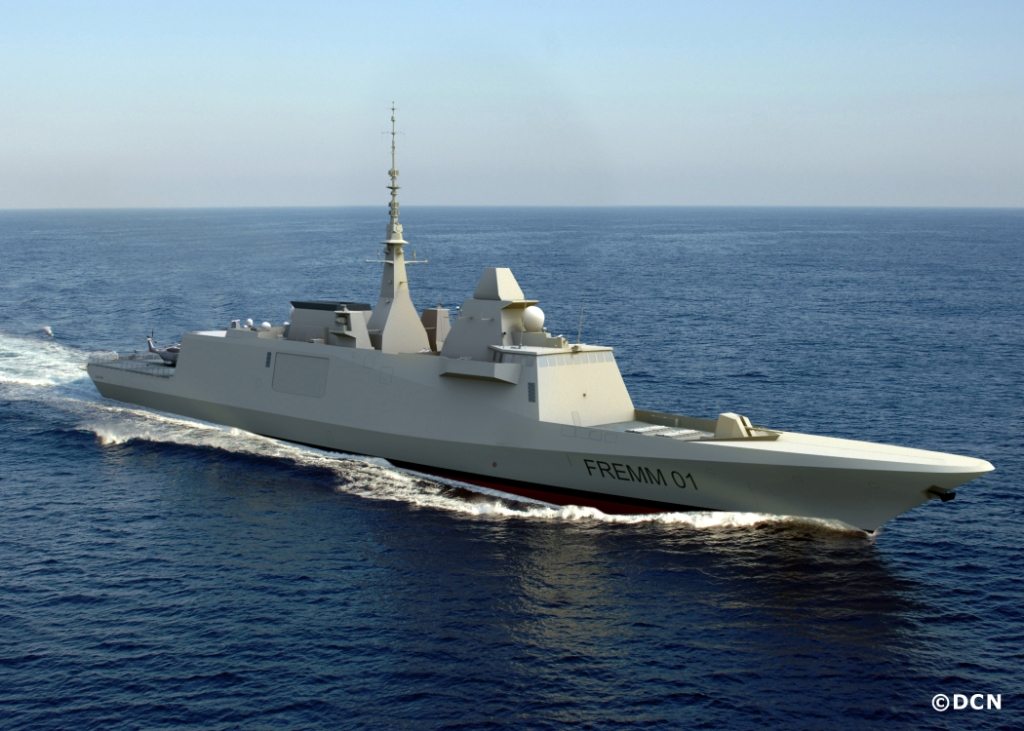The FREMM Normandie multi-mission frigate, second of the series ordered by OCCAR (*) on behalf of the DGA (Direction Générale de l’Armement) and the French Navy, left the DCNS site in Lorient on 14 May on its way to the DCNS site in Toulon.
Over the next few weeks, DCNS will perform a new series of sea trials to test the performance of the FREMM’s combat system before delivery to the French Navy at the end of 2014.
This series of sea trials, which will take place in the Mediterranean, will allow the Navy’s operating crew and the DGA, OCCAR and DCNS specialists to check the performance of the main combat system sensors and their integration into the frigate’s Combat Management System.
“This period of sea trials is an essential phase in the program: it is focused on the vessel’s combat system. Concretely, the teams will test all the software and equipment parts that make the FREMM one of the most versatile and capable frigates in the world”, underlines Anne Bianchi, Director of the FREMM program.
During these trials, the teams on board will simulate different operational scenarios to collect the information delivered by the vessel’s different sensors. Numerous tests are performed including in particular electronic warfare and tactical data link tests. The teams will carry out these exercises thanks to the contribution of helicopters, fighters and vessels provided by the French Navy, and with the human and data-processing resources of the DGA’s technical centres. The performance of these trials off the Toulon coast will thus allow the optimized use of such naval and air support.
Further to these trials, the FREMM Normandie will return to the DCNS site in Lorient so that the final finishing work can be carried out over the summer before its delivery to the French Navy in the final quarter of 2014.
The FREMM program: a major program for DCNS and its partners.
For DCNS, the FREMM program represents twelve units, with eleven for the French Navy and one for the Royal Moroccan Navy.
To recall, in November 2012, DCNS successfully delivered the FREMM Aquitaine, the first unit in the series of FREMM multi-mission frigates. The second unit in the program was delivered to the Royal Moroccan Navy on 30 January 2014, in compliance with the contractual agreements. The vessel now carries its definitive name: FREMM Mohammed VI.
DCNS is currently building five other multi-mission frigates in Lorient, all at different stages of advancement:
- The FREMM Normandie, third unit in the series, started its sea trials in October 2013 and will be delivered to the French Navy in the third quarter of 2014.
- The FREMM Provence was floated in September 2013.
- The fifth and sixth frigates of the series are currently being assembled.
- The cutting of the first metal sheet for the seventh was performed at the end of 2013.
FREMM technical characteristics
FREMM frigates are extensively armed and are equipped, under the project management of DCNS, with the most capable weapon systems and equipment, such as the Héraclès multifunction radar, the Naval Cruise Missile, the Aster and Exocet MM 40 missiles or the MU 90 torpedoes.
- Overall length: 142 metres
- Width: 20 metres
- Displacement: 6,000 tonnes
- Maximum speed: 27 knots
- Crew: 108 persons (helicopter detachment included)
- Accommodation capacity: 145 men and women
- Range: 6,000 nautical miles at 15 knots
* OCCAR, Organisation for Joint Armament Cooperation, is an international organization whose core-business is the management of cooperative defence equipment programs entrusted to it by the Member States. OCCAR ensures, amongst other things, project management for FREMM multi-mission frigates for France and Italy.
DCNS designs and builds submarines and surface combatants, develops associated systems and infrastructure, and offers a full range of services to naval bases and shipyards. The Group has also expanded its focus into civil nuclear energy and marine renewable energy. Aware of its corporate social responsibilities, The DCNS Group generates annual revenues of €3.4 billion and employs 13,600 people (2013 data).










